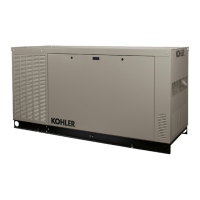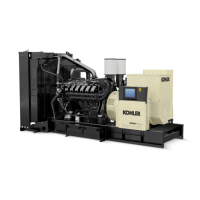.
‘ENGINE RECONDITIONING
WORK AREA
Before starting disassembly of an engine,
make sure work area is in clean, neat condition and
that adequate tools are on hand.
Certain special tools are required to satisfactorily install oil seals,
lrO1’ rings, etc. Good lighting is also essential for proper inspection and reconditioning.
Observe all
rules of safety when working on an engine.
M&ke sure cleaning solvents and other flammable liquids are
properly identified and stored in covered containers safely away from danger of combustion from open
flames, sparks, etc. The best protection against accidents in all situations is provided mainly through
the use of good common sense.
INSPECTION
When disassembling an engine,
carefully inspect and note the physical appearance of each of the
. components.
Often the appearance of parts will indicate operation under other than ideal conditions.
In observing these indicators,
you may be able to suggest improved service and operating techniques
which will result in prolonged engine service life.
Some of the things to look for are:
1. Excessive sludge and varnish formation.
2. Scoring of the cylinder walls.
3.
Severe piston damage.
4. Evidence of external oil leakage.
.
These are just a few of the more common indicators.
Numerous others exist and are obvious to
the experienced mechanic.
Often the cause will become apparent in view of the particular condition of
the part. Always look for these signs when disassembling an engine prior to reconditioning.
, .
Excessive Sludge: This is a natural by-product of combustion and a small accumulation is normal.
Excessive sludge formation could indicate several things.
The most common cause is perhaps too
infrequent. oil and oil filter changes.
It can also indicate operation with improper ignition timing or
overrich carburetor adjustment or a poorly serviced clogged air cleaner which restricts’ air intake and
also results in an overrich mixture.
Scoring of the Cylinder Wall: Unburnt fuel not only adds to sludge formation but can, ‘in severe cases,
cause scuffing and scorrng of the cylinder walls.
As raw fuel seeps down the cylinder walls, it washes
the necessary lubricating oils off the piston and cylinder walls so that the piston rings make metal to
metal contact with the walls.
Scoring of the cylinder walls can also be caused by localized hot spots
resulting from blocked cooling passages or from inadequate or contaminated lubrication.
Severe Piston Damage: Major damage to pistons and rings can take
vat
piston ring may be burned through or the top groove may be excessi
,vely
stuck in the groove.
This can be attributed to abnormal combustion
. If
i
,ous forms.
The top of the
worn and the ring broken or
ignition timing is overadvan ,ced,
ignition will&cur while the piston still has a long distance to travel on its compression stroke.
As a
result, the combined h&at of compression plus the heat of pre-ignited fuel raises temperatures to values
comparable to that of an acetylene torch.
This, of course, acts mainly on the top latid and top ring of
the piston and results in early failure. .
Evidence of-External Oil Leakage: If excessive oil leakage is evident, this may indicate improperly
serviced breather systems.
Normally, an engine operates internally at pressures under atmospheric
or, in other words, with a negative crankcase pressure. If positive pressures build up within the
crankcase from a clogged breather or from piston blowby, oil will be forced out of an engine at oil seals,
gaskets, or any other available spot.
91
.
9
